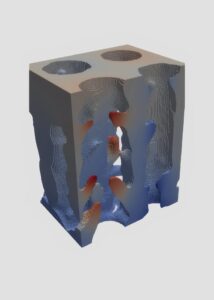Lat(t)e to act, 92% of condemned EV batteries repairable and next gen heat exchangers
In this issue:
92% of “failed” EV batteries repairable
EV batteries are much more likely to be repairable or restorable than previously thought. Autocraft Solutions analysed repair data from 559 commercial repairs of “failed” EV batteries across 2024. Contrary to common belief that battery failure is terminal (pi), it discovered 92% of modules within a battery pack deemed to have “failed” are still viable for automotive reuse and most battery packs could be restored to 90% of their original health by replacing an average 1.1 modules. Based on an 82.4kWh pack, replacing modules rather than the entire pack delivers a 93% reduction in emissions for each battery repair.
Next generation heat exchanger delivers 27% increase in power
That’s the claim of a team from the University of Wisconsin which has 3D printed a new type of heat exchanger that is not reliant on a traditional, straight-pipe design. The team used topology optimisation to redesign the internal fluid channels of the exchanger for maximum heat transfer. The illustration shows just how different this is from straight pipes.
Lat(t)e to act
Large dairy and coffee companies are performing poorly in addressing their methane emissions. Changing Markets Foundation, in its poorly punned report Running Latte, analysed 20 major dairy firms and coffee chains, with combined revenues of US$420bn (NZ$715bn), finding only 6 track methane emissions meaningfully and only 4 publish their data. Danone emerged as the only company with a specific target to cut methane and plan to achieve it. Dairy is Starbucks’s largest source of emissions, getting through 750 million litres of milk a year just in the US, and yet has not published any strategy on its methane emissions.
Carbon capture gigafactory to offset 27 million cars
Svante Technologies has completed commissioning of its carbon filter gigafactory in Burnaby, British Columbia. The factory covers 13,000 square metres and will manufacture solid sorbent filters to remove CO2 from chimney stacks and other industrial processes. If demand emerges for the technology, the factory is capable of producing enough filters to capture 10 million tonnes of CO2 a year, equivalent to the amount produced by 27 million cars.
Taking the p***
Is 27% more energy efficient for generating hydrogen than standard electrolysis of water. That’s the conclusion of scientists from the University of Adelaide who have developed a new technique to generate hydrogen from urine. While the use of urine as a feedstock for hydrogen production brings other challenges from by-products, these have been overcome. The researchers believe hydrogen can be generated through the process at a cost comparable to the commercial production of grey hydrogen.
Did you know ……
There is an emissions gender gap? A recent study of individuals’ emissions profiles in France reveals men typically have a 26% higher carbon footprint than women. The gap is attributed mostly to eating habits and vehicle choices. It seems French men still love their red meat and fast cars.

